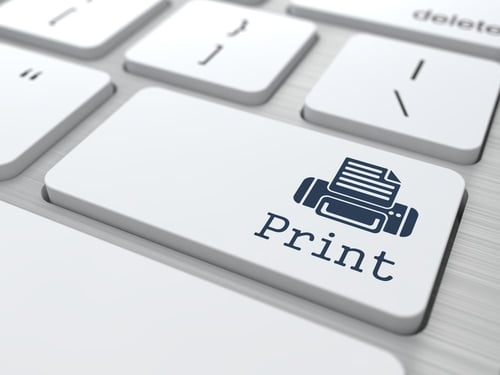Blockchain and additive manufacturing, i.e. 3D printing, have repeatedly arisen as key technological themes during the last decade. Recently there has been a tendency to mate these two constituents of technological transformation together, which is a somewhat common phenomenon taking place in connection with the discussion of topical trends. As such, digital databases and manufacturing of physical products appear to lack notable natural, synergetic relationship, or do they? And especially, does the potential relationship affect intellectual property rights (IPR) and contractual practices?
With blockchains it is substantially referred to distributed, secured storage of digital information. In turn, 3D printing is associated with various manufacturing methods based on adding material in layer-upon-layer fashion, such as FDM (Fused Deposition Modelling), wherein using a virtual model as an objective, source material or materials are provided to construct a corresponding physical product.
Traditional value chains are changing – what are the implications?
As alluded to above, blockchain refers to a technology where digital data is stored in a replicated, distributed and verifiable manner into blocks, which are hosted by servers operated by typically several parties. Each block may carry one or more transactions, which may contain practically whatever information such virtual currency transfer or similar transfer logs, a document or e.g. program code of a smart contract. Each block is linked to a previous block in a chain using a mathematical hash function, which effectively prevents subsequent undetectable tampering of the blocks. Depending on the implementation, block or transaction data is often provided with time stamp and signature of the data provider. Yet, the data stored in a block may be encrypted.
Accordingly, the ecosystem surrounding 3D printing is complex and value chains associated with the related products can be exceptionally diverse, multi-phase and dependent on several members. The members may include e.g. a designer of a virtual model, distributors (consider the opportunities offered by platform economy), printing operators, material suppliers, end users and logistic companies. 3D printing technologies have shaped traditional value chains e.g. due to a fact that product design and actual manufacturing thereof has become available to a larger crowd including the end user, whereupon also logistic needs have reduced or at least evolved remarkably.
If a value chain encompassing product design, manufacturing and distribution to end users is supplemented with later phases regarding the use, service and disposal of the product, life cycle thinking enters the stage. When the value chain or life cycle of a product is potentially associated with multiple players and phases, information, including its timeliness and authenticity, regarding product design, manufacturing, use/use safety, legal aspects such as IPR, service related matters, and authenticity of the product will play a critical role in establishing a functional, sustainable ecosystem. Tangible challenges may be represented by unauthorized distribution of virtual model files or manufacturing of spares in dubious conditions using undefined materials.
It is necessary to consider IPR during technological advances
One may approach the connection between block chain technology and 3D printing by the concept of ”digital thread”, which refers to collecting and storing of digital information concerning the life cycle of a product. Blockchain technology enables establishing the thread in the context of 3D printing starting from product order or design, and ending up in the disposal of the product, for instance, because recording each event of each phase of a product, or a particular product item, in a blockchain can be executed reliably practically in real-time. Product-specific information may be integrated into the tread by means of mutually compatible, automated data interfaces and product identification data, resulting in comprehensive life cycle models for flexible utilization by various parties. Utilization may cover early stage optimization of manufacturing, such as selection of optimal printing materials and technologies based on the available product development data, and further cover product development itself in terms of directing the design work of virtual models responsive to product testing data, for example.
As the information included in a block chain as well as its source may be verified, blockchain technology provides excellent technical readiness for recording, tracking and controlling of product-related copyright and industrial property right aspects, as a part of of the digital thread or separately; from whom or where did the virtual model originate (e.g. digital platform), who was responsible for manufacturing, who was the recipient or buyer, when did the various event take place, etc.
Obviously similar information may be gathered and stored using other data management solutions as well, but the distributed, replicated, persistent and authenticable nature of blockchain renders it particularly applicable option for storing the digital thread and especially, product liability, IPR and other information having legal relevance. Naturally, IPR aspects are closely related to both blockchain and 3D printing technologies anyway; we talk about new age ever cultivating innovations that can be secured by way of patents, for example.
In light of the foregoing, one could draw a conclusion that there indeed exists a natural, synergetic link between blockchain, 3D printing and IPR.
Specialists at Berggren have joined the technological transformation
We at Berggren have invested, besides IPR and contract law, also in gaining versatile understanding of prevailing and arising technologies such as blockchains and 3D printing. We are glad to help you in developing your business by means of necessary contracts, studies and protective measures related to such technologies. ”The best way to predict the future is to create it” and ”the best way to predict the future is to invent it” are both famous quotes that encourage a recipient to take an active role in creating their own future instead of merely observing the occurring changes or taking a reactive stand. We want to positively affect your success now and in the future in the middle of the ongoing technological transformation.
Relevant links:



